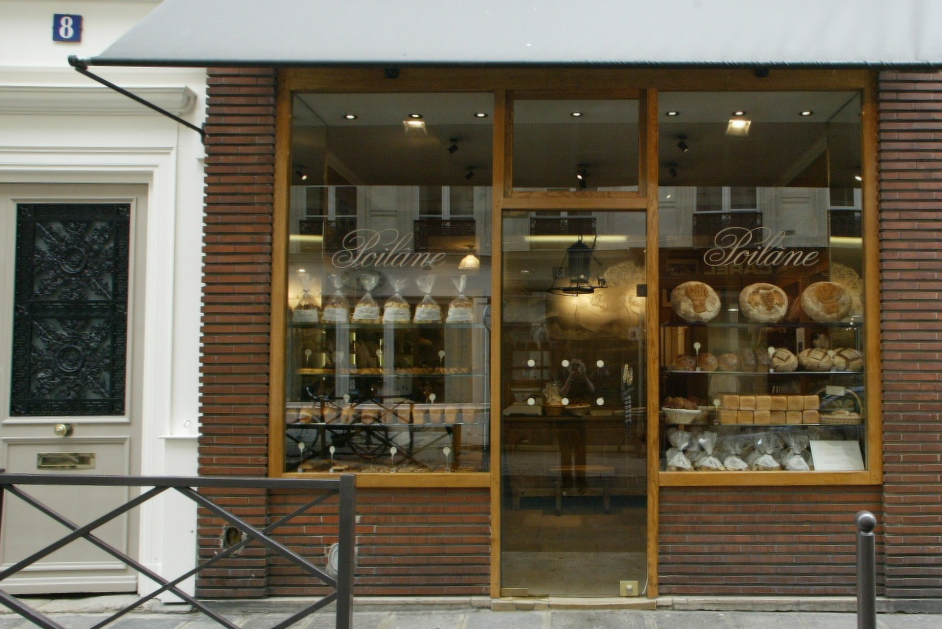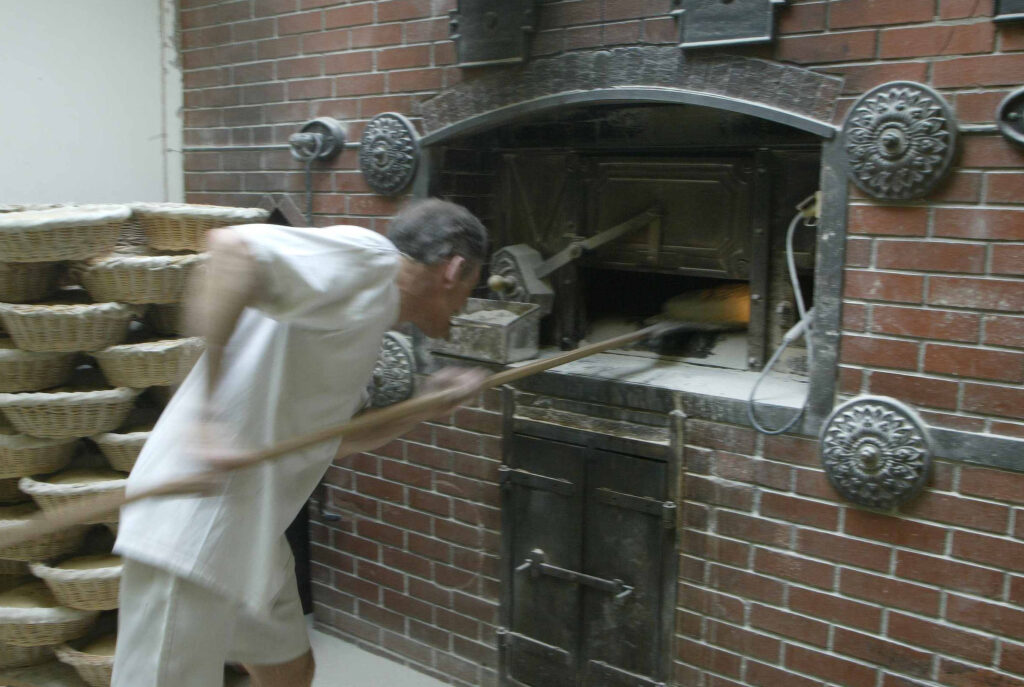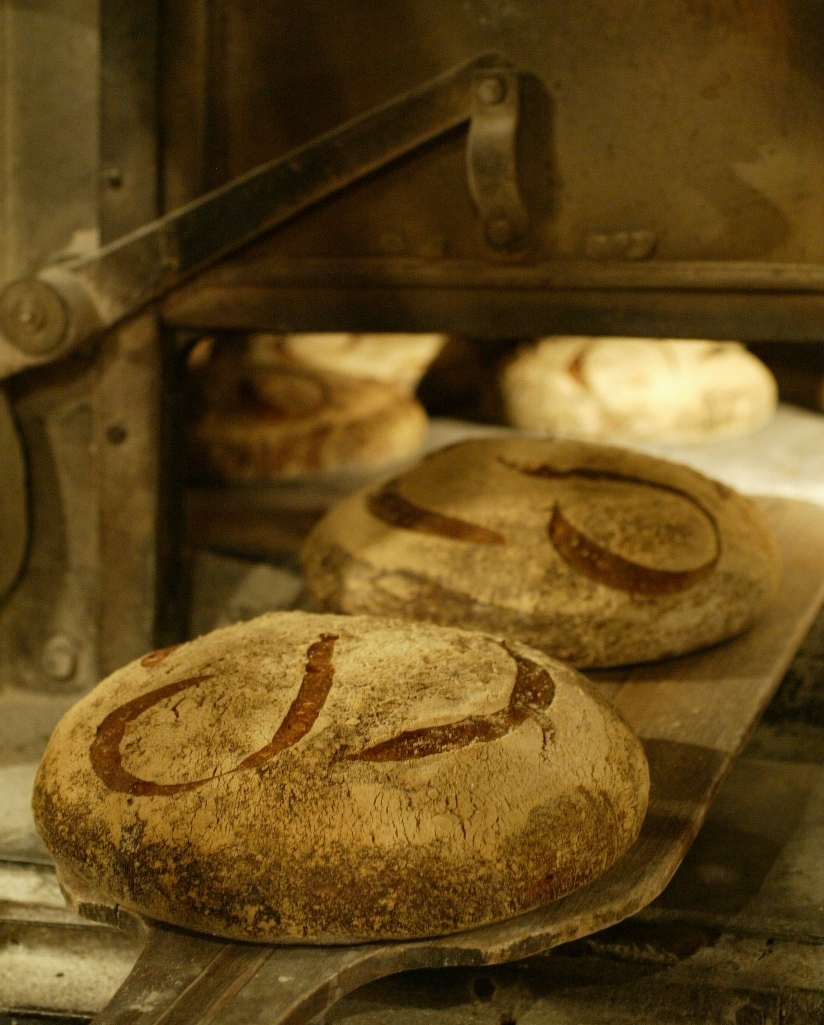Retro-Innovation at Maison Poilâne in Paris

BREAD Magazine is currently reflecting on the nature of “artisanal” or “traditional” bread and on the differences between such bread and bread that is known as “industrial.” Whether a definition of “artisanal” bread is possible or not is open to debate. That is why BREAD has sought to collect the thoughts of leaders in the artisanal bakery business as well as from within the industry (see issue 20).
In this article, we interview Apollonia Poilâne, CEO of Maison Poilâne, one of the largest artisanal bakeries in France.
Pierre Poilâne established the first bakery in 1932, on rue du Cherche-Midi, in Paris. His son, Lionel Poilâne (1945–2002), succeeded him as the leader of the bakery in the 1970s and developed it into a large-scale artisanal business. After the tragic death of Lionel Poilâne and his wife in a helicopter crash in 2002, their daughter Apollonia Poilâne took over the leadership of the company, at the age of 18.
The original bakery on rue du Cherche-Midi still exists, alongside other bakeries and shops around Paris – and even in London. The manufacture in Bièvres, built in the 1980s, has been producing around 15,000 loaves of wood-fired levain bread per day, 24 hours a day, since its inception. Aficionados of “Pain Poilâne ®,” a registered brand, can order their bread online and get it shipped directly to them, worldwide.
A Tradition Founded on Craftsmanship
Here are Apollonia’s views on the evolution of Poilâne bread, beginning with her thoughts about how the bakery managed to remain artisanal over three generations:
“Each baker is thus responsible for each batch of breads that he produces. He can’t say: ‘It’s this baker who didn’t do his job properly.’ He is responsible for this production from beginning to end.”
“Our tradition is based on the transmission of our know-how. There have been three generations of leaders, but also three generations of bakers. Our singularity lies in our handicraft know-how, our craftmanship.
“My father established a training program that could train a neophyte to become a full-fledged baker in nine months. At the bakery, each baker makes his own bread from A to Z. Our tradition is the transmission of this craftmanship, which relies on the choice to make bread by hand, to shape it by hand.
“Each baker is thus responsible for each batch of breads that he produces. He can’t say: ‘It’s this baker who didn’t do his job properly.’ He is responsible for this production from beginning to end. That’s part of our brand. It also contributes to our quality control procedures.”

I wondered how the manufacture in Bièvres, which produces more than 10,000 loaves per day, 24 hours a day, could actually be part of and support the craft tradition of bread making. Apollonia explained:
“When my parents decided to open the manufacture, they chose to make bread the way it was done at the bakery. At the manufacture, we have 24 wood-fired brick ovens side by side. Each baker manages his own oven as if he was in a stand-alone bakery. Each of the bakers make his bread independently from the others.
“A baker makes 100 loaves per batch and he can bake up to three batches of bread per day. These loaves are the signature bread of Maison Poilâne, called ‘Pain Poilâne ®,’ with the large P-shaped cut on the top. They weight 1.9 kg.
“The manufacture model in Bièvres allows us to sustain a large volume of sales, to our resellers, customers and restaurants. Meanwhile, we are able to respect a true artisanal quality, because each baker makes no compromise on our unique manufacturing methods.”
Retro-Innovation: A Balance Between Past and Present, to Build the Future
Lionel Poilâne, Apollonia’s father, used to talk about the evolution of Maison Poilâne with the words “retro-innovation.” I asked Apollonia whether she was still using these words and, if so, what they mean to her? She answered:
“The word ‘retro-innovation’ evokes a balance between our roots, our past, an ancestral tradition, a well-tried method, on the one hand, and the contemporary period, the avant-garde, new techniques, on the other hand. Retro-innovation is this balance between past and present which allows to build the future.
“For example, when the bakers transfer the dough from the mixer (an example of contemporaneity) to the dough bins (called “pâtière” in French), he can feel the energy that the bin gives back to the dough. He can then feel the quality of his dough on that day.
“Bakers weight and shape dough by hand: they do not use dividers. To cut the dough by hand is more respectful of the dough. Machines can’t have the same prehension as human hands, which are suited better to feel the quality of the dough. This choice reflects the fact that hands are still a more modern tool that certain machines.
“We don’t use cold on the line of production, to control or slow down fermentation. Everything is done naturally. Once the dough has been weighted and shaped, we place it in linen-covered wicker baskets. We let it ferment at the bakery temperature. We want to respect the time that the dough needs to develop its aromas.
“In winter, we may bring the dough closer to the oven so it can warm up, or take it away from it in the summer time when it’s hotter.
“Each loaf of bread means six hours of work, nine months of training and three generations of men and women who love bread and who want to make the best quality bread.”
“Each oven is heated with a wood fire. Bakers know their ovens and their doughs. This allows them to adapt to circumstances: fire a cold oven longer for the next batch or wait for a hot oven to cool down before sliding the loaves in it.
“To listen to and feel the dough with the five senses is not an obvious faculty to develop. This is truly what we try to teach our bakers. We put our five senses at the service of the dough.”
I exclaimed my own admiration for such a huge endeavor, considering that hundreds of loaves are being hand shaped at any given hour of the day at the manufacture. Apollonia continued with a much often used catch phrase:
“Each loaf of bread means six hours of work, nine months of training and three generations of men and women who love bread and who want to make the best quality bread.”
I then asked her in what direction she thought innovation would lead Maison Poilâne in the future. She answered:
“Who know what tomorrow will look like. There are definitely things that will revolutionize or contribute to the innovation of our methods. In 1997, when we opened up an online store to sell our bread worldwide, that was considered as avant-garde.
“Since the days of my grandfather, Pierre Poilâne, our bakery has kept reflecting on the quality of ingredients. We are ready to call in question what we have achieved and to go further. Making quality bread is our day-to-day challenge. So is the transmission of our know-how and expectations to future generations of bakers. We are imagining the future and we are taking risks to embody a spirit of innovation, which means finding a balance between tradition and modernity.”
Defining Artisanal Bread
Apollonia was very clear in her purpose to advocate the business of which she’s the leader. Her arguments were solidly woven together and she seemed to possess ideas of her own about any topic. I felt confident we could address further the issue of the definition of “artisanal” and “traditional” bread, about which she had this to say:
“In France, we love to define everything. The baker’s trade is one of those trades that are framed by a lot of rules in our country. We’re very attached to handicraft. It makes me laugh when, in North America, I hear people using the word ‘baker’ to talk about so many different things.
“It’s hard to propose a definition of ‘artisanal’ bread. We should reflect on the ingredients and on the levain, the mother that will lead to the whole bread production. There is also know-how and handicraft.
“These are just elements of a reflection. If I were to walk into a bakery and were curious to know whether I’d buy the bread or not, I would ask questions about how the bread was shaped, in what kind of oven it was baked, what type of fermentation had been used, and so on.”
“These are just elements of a reflection. If I were to walk into a bakery and were curious to know whether I’d buy the bread or not, I would ask questions about how the bread was shaped, in what kind of oven it was baked, what type of fermentation had been used, and so on.
“These elements take into account the fact that good bread takes time. We should feel and see the aromas develop and make no compromise, on the quality of the ingredients or the production methods, for the sake of convenience or price.”
When I asked her whether artisanal bread should be more affordable and sold at a lower price so that more people could enjoy it, she adamantly replied:
“What is the cost of a low price? If a baker can’t make a living out of his breads, if the farmer can’t respect nature, the lowest price will always be a short-term vision.”
It isn’t as if Poilâne Bread was sold at an exorbitant price. Compared to other famous artisanal bakeries that I’ve visited in Paris, its price actually stands in the mean zone. Therefore, Apollonia’s statement concerned the whole artisanal bread scene and not only the business about which she’s outspoken.
As a final word, Apollonia shared some advice based on her own personal feeling about bread:
“Next time when you visit a bakery, let your five senses speak for you. Ask yourself what the bread has to offer you, what it evokes in you. Let that guide your choice.”
**
The artisanal nature of bread is an open question. However, we can tackle it through an experience of the senses. That means going beyond mere thinking and reflection. We have to stop trying to convince ourselves about bread and experience it directly.
